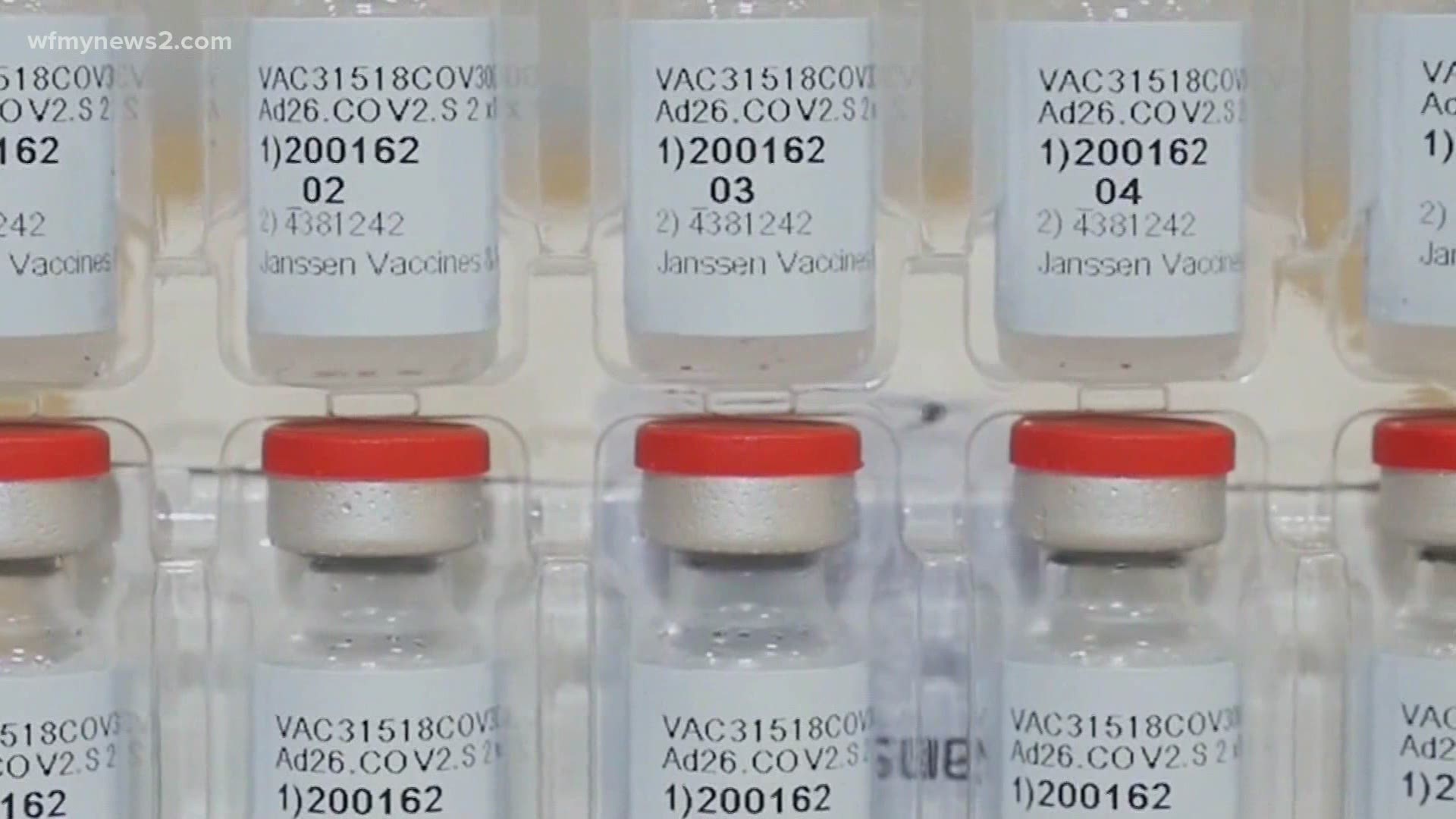WINSTON-SALEM, N.C. — The state's first shipment of the one-dose Johnson and Johnson COVID-19 vaccine will make its way to North Carolina this week after its approval for emergency use authorization over the weekend.
The third vaccine to be given the green light from the FDA advisory committee for emergency use, the Johnson & Johnson shot has also been through testing, some of which took place right in the Triad.
"Our volunteers, of course right now I don’t know which ones got the vaccine and which ones got the placebo, but I can say that none of them complained of very many symptoms," said Wake Forest Baptist Health Chief of Infectious Diseases Dr. John Sanders.
Sanders said anyone who gets the shot from Johnson and Johnson could experience mild side effects.
"When we talk about the sort of symptoms that they had, typical for any vaccine. Sore arm, low-grade fever, feeling like 'Oh I got a little mild infection,' because that’s what a vaccine does is it tricks your body into thinking you have a mild infection," said Sanders.
Vaccine side effects, Sanders said, are nothing Tylenol or ibuprofen can't ease.
The vaccine trials went beyond the Triad. Sanders said that in-depth testing has given scientists and health experts a sense of how safe the vaccine is.
"In the data that they’ve released so far, just like the Moderna and Pfizer vaccine, tens of thousands of people vaccinated and not a single adverse event, serious adverse event," said Sanders.
The efficacy rate of the vaccine varies depending on what category of infection or level of disease is being referenced, according to Sanders.
"Somebody can get infected and not have any symptoms, not have any disease, or somebody can get infected and have mild symptoms, moderate symptoms, or severe symptoms," said Sanders.
Sanders said the efficacy rate of the Johnson and Johnson vaccine looks very promising.
"In terms of this vaccine protecting us against severe infection against hospitalization or death, the numbers look very good, in the mid 80 percent range. That’s fantastic," said Sanders, "When you’re talking about moderate to severe, it moves down into the 70 percent range, but most of us would be pretty happy if we got COVID and only had some mild to moderate symptoms."
Sanders said he expects more information to come out about the efficacy and impacts of the vaccine as time goes on.
"We're going to see more and more clarity on these numbers as more information comes out, but also as the vaccine rolls out, then we'll start to collect real-world information as we start to clarify this more," said Sanders.
The Johnson & Johnson vaccine is different from Pfizer and Moderna in that it just takes one dose, rather than two. Sanders said Johnson & Johnson's shot also doesn't have to be stored at ultra-cold temperatures. He said that will help in making the vaccine easier to transport and distribute.
"I think that what we’re going to see is they will use it and mix it in with other vaccine options to get it to people who need it the most quickly," said Sanders, "We'll probably see that it gets moved out to harder-to-reach places. Rural communities that don’t have the infrastructure as easy to keep the other vaccines ready. That short of placement, but the more vaccine doses the better."
Sanders said he still believes by this summer, a vaccine should be available for anyone who wants a shot.
"I hope that’s everybody because they are really safe and really effective," said Sanders.

